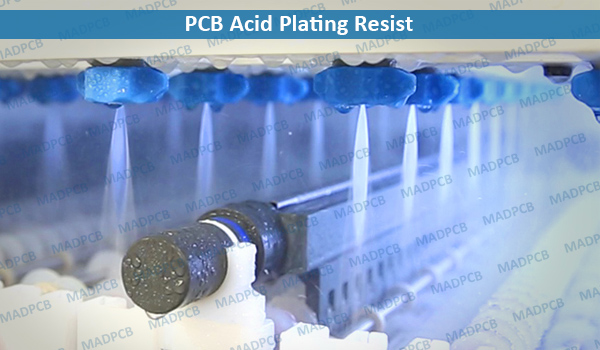Plating Resist is a kind of alkaline- or acid-resistant ink material applied as a covering film on an copper area of printed circuit boards (PCBs) to prevent plating on this area. LPI (liquid photo Imageable) versions are available in the market and can be applied by screen printing or curtain coat.
LPI plating resists are widely used in the precise circuit board manufacturing of single/double sided/multi layer boards, and it is resistant to plating of copper, tin, lead and nickel-gold (hard and soft gold plating).
Plating Resist Operation Procedure
| Pre-treatment of substrate | To treat the substrate with scrubbing-machine: Acid treatment→Polish-brush→Washing→Drying→Dust removing |
| Screen printing | Screen mesh: 77~100T silk screen, film thickness: 7-12 microns |
| Pre-drying | The first side: 75+/-5oC×10~15 minutes The second side: 75+/-5oC ×15~20 minutes Double sides: 75+/-5oC ×20~25 minutes |
| Exposure | Exposure energy: 100~180 mJ/cm2, be subject to: 7-9 steps of residual film out of 21-step sensitivity guide. |
| Developing | Composition of developing solution: 1% of Na2CO3 solution; Temperature of developing solution: 30±2oC; Developing time: 40-60 seconds; Developing spraying pressure: 1.8-2.2kg/cm2; Washing pressure after developing: 1.8-2.2kg/cm2; Washing time after developing: 20-30 seconds. |
| Plating Resist | Resistant to plating of copper, tin, lead and nickel-gold |
| Stripping | Stripping solution: 5% of NaOH solution, Operating temperature: 5+/-2oC Stripping time: 2-3 minutes. |

